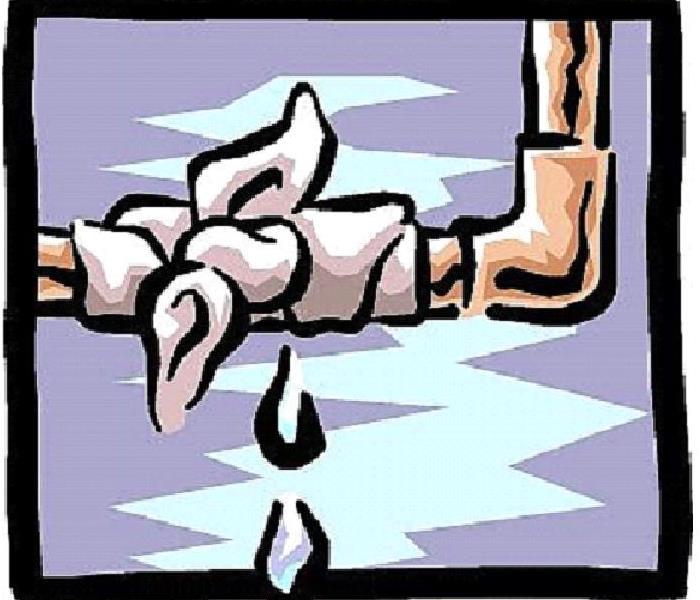Recent Mold Remediation Posts
Can Living With Mold Affect Your Health
6/14/2018 (Permalink)
The topic on health hazards from mold exposure is a gray area. It is believed that living with high levels of mold can cause some minor and/or serious health affects. However, there is very little evidence to confirm all instances at this time.
What most can agree on is living with mold should not be ignored. Not only due to the beliefs of the health risks accompanied but the affects it may cause to the value of your home. Any new buyer or renter will not want to walk into another person's mold issue.
Mold comes in thousands of different strains but only a few of those produce toxins. The most well known being stachybotrys chartarum also known as "black mold". Did you know the term we hear often as "toxic black mold" is not actually a scientific term. It was created by news reporters that carried the term around to create the myth that "toxic black mold" is deadly which in reality that has not been proven.
Now lets discuss what types of symptoms are reported due to mold exposure. People who spend time in these environments report respiratory issues such as shortness of breath, development of asthma, coughing, wheezing, eye irritation, nasal congestion and throat irritation. It is believed that those with weakened immune systems or a history of allergies or asthma are more prone to adverse reactions from mold. There are also some people that are more sensitive to particular strains of mold that can vary from person to person.
The CDC suggested a link between mold and a medical condition called acute idiopathic pulmonary hemorrhage (AIPH) or pulmonary hemosiderosis. Others state that mold causes more serious conditions as well like lung disease, upper respiratory infections or even cancer. These claims have yet to be proven with any substantial evidence.
Although the research is limited on proving many of these claims it should still not keep someone from treating and removing any mold growth in their home. Hopefully future research can provide more insight so that federal laws can help regulate mold in homes.
Top Sources of Mold
5/30/2018 (Permalink)
We will be discussing the primary sources of mold that are commonly found in homes. As we all know mold needs moisture and food (porous materials) to grow. Mold also likes dark humid environments. Some key causes to look out for mold are:
1. Leaky Appliances
Daily wear and tear to your appliances can cause leaks or splits that can allow moisture to escape. Unfortunately most appliances have the pipes and hoses hidden out of sight running inside walls or cabinets. So it may take some digging around to find any leaks. We recommend checking regularly for loose washers or leaky hoses.
2. Air Conditioning Units
The condensation from an air conditioning unit creates moisture for mold. On top of that it also sucks in air from the outside that contains dirt and pollen which are attractive materials for mold. You can help minimize mold growth by running it everyday for at least 10 minutes. When it sits for long periods of time it is more likely to grow mold. When not in use like during winter season you should remove it and store in a dry place.
3. Water Intrusion
It is beneficial to check your ceilings and cracks of your windows for any water getting in. This can be a sign of poor building construction so you may need a professional to diagnose and treat the issue.
4. Window Sills
This area is subject to higher levels of moisture and humidity along with dirt that is a valuable source for mold.
Next, we will discuss some locations in your home that have a higher chance for mold to grow.
1. Basement
Being that most basements are located on a sub-level, moisture is constantly part of its environment. The humidity level is much higher and typically not well ventilated leaving humidity to linger longer. Any cracks in foundation can also add to the issue.
2. Wallpaper
If wallpaper is peeling it is likely that it has mold growing behind it.
3. Attic
The attic of a home is home to many air flow sources like dryer vents, plumbing vents, and kitchen/bathroom. All of these constantly pump moist air into the attic accompanied with all the inevitable dust found there makes a perfect environment for mold.
4. Crawlspace
Like a basement the crawlspace also has a higher relative humidity. The soil in the crawlspace will absorb and lock in moisture and when it dries it will evaporate adding moisture to the air.
Why Bleach Is Not Recommended for Mold
5/29/2018 (Permalink)
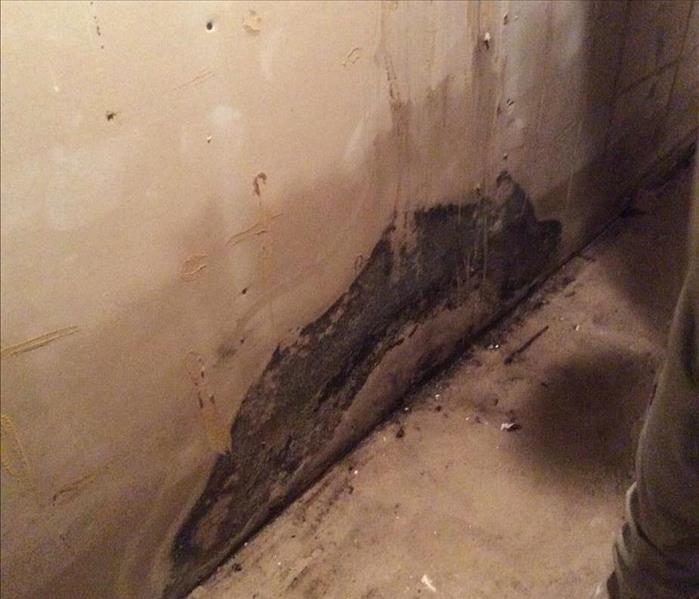 Mold Growth on Sheetrock
Mold Growth on Sheetrock
Did you know that bleach does not actually get rid of your mold problem? The old school thought of spraying bleach whenever you see mold is nothing but a myth. The reason people believe this works is because to the naked eye the visible mold is gone, yes, but that is because the bleach has removed the color of mold not its roots.
The OSHA (Occupational Safety and Health Administration) stopped recommending the use of bleach for dealing with mold problems. The ESA (Environmental Site Assessment) also updated their guide similarly as well.
The problem with bleach is that it is has too many variables that affect how it can treat mold. Bleach only works on killing mold on non-porous materials. If you read our previous blog on how mold growth occurs you will know that mold typically grows on porous materials like drywall and wood. So the chances your mold growth will be on a hard surface is unlikely anyways.
Using bleach to clean areas like wood can actually promote mold growth and can leave you with a bigger problem than when you originally started. This is because mold spreads its roots deep into porous surfaces. When you use bleach it creates excessive moisture which then creates a better environment for the mold to return and thrive. Bleach will also negatively affect materials like wood by breaking down its fibers. It can also cause corrosion to metals.
Bleach contains an ingredient called Sodium Hypochlorite which in high concentrations can be registered as an antimicrobial pesticide that will kill mold under the Federal Insecticide, Fungicide and Rodenticide Act. However Sodium Hypochlorite can also be sold as a household cleaner without being registered as a pesticide due to this type of item only containing small amounts of Sodium Hypochlorite. This means it is not guaranteed to kill mold nor is it sold for that purpose.
We want to steer you away from thinking bleach is the best route to dealing with your mold. Not only is it not effective but the dangerous fumes are toxic to your health. Plus, there are many anti-microbial alternatives readily available that will get the job done and are safer to use.
If you are dealing with mold in your home it is recommended to contact a professional. We are available to answer your mold questions. Contact us today @ 201-445-5588.
Dealing With Hoarding
5/9/2018 (Permalink)
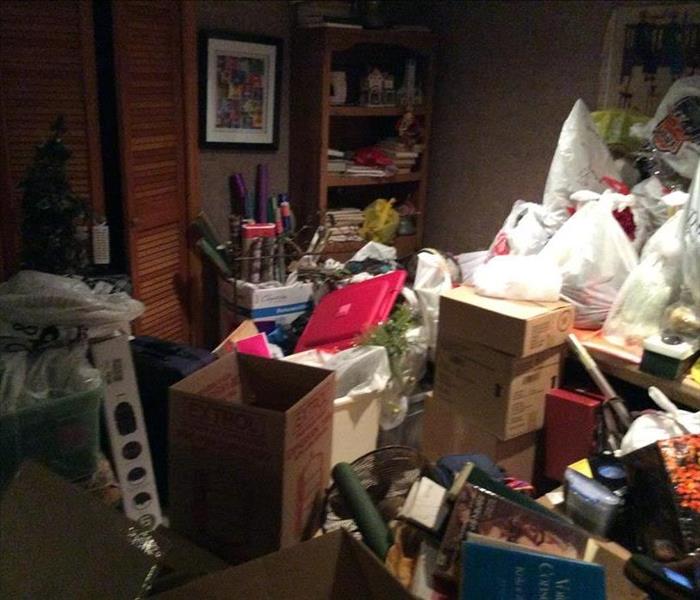 Homeowner with hoarding disorder affecting the mitigation of water damage and mold growth.
Homeowner with hoarding disorder affecting the mitigation of water damage and mold growth.
What is hoarding?
By definition hoarding is collecting or keeping large amounts of various items in a home due to strong urges to save them or distress experienced when discarding them. It is classified as a mental disorder that usually is the result of a traumatic event or a symptom of another disorder such as depression, dementia or obsessive compulsive disorder. It is most commonly found in older adults.
Many rooms in a hoarders house are so packed with items that the room cannot be used for its intended use. This makes normal everyday living compromised.
Hoarding can really be an issue in terms of safety and health. For one it can be a major fire hazard. In the event of a fire many occupants die due to the inability to escape the home because of blocked exits or even injuring themselves by tripping over items. Firefighters responding to a fire that is home to a a hoarder can be put at risk as well due to these obstructed exits and falling objects. It makes the search for occupants much harder and very risky. The weight of large amounts of piled up personal belongings along with the use of water to put out a fire can lead to a homes collapse.
Along with fire safety hazards hoarding can also be detrimental to health in the event of ignored or even unnoticed water leaks that can lead to mold growth. Many times a pile of various items can hide any issues that may be going on in the home since they are blocked out of sight. It can also attract pests and rodents that can gnaw away at materials like wiring causing further safety risks.
To prevent and respond to hoarding behavior be sure to be respectful when communicating with the individual. Instead of acknowledging the clutter focus on expressing safety concerns for not just themselves but for those around such as neighbors, family members, responders etc. The use of outside outlets to help with intervention can be beneficial and necessary.
How to Prevent Mold Growth After a Water Damage
4/11/2018 (Permalink)
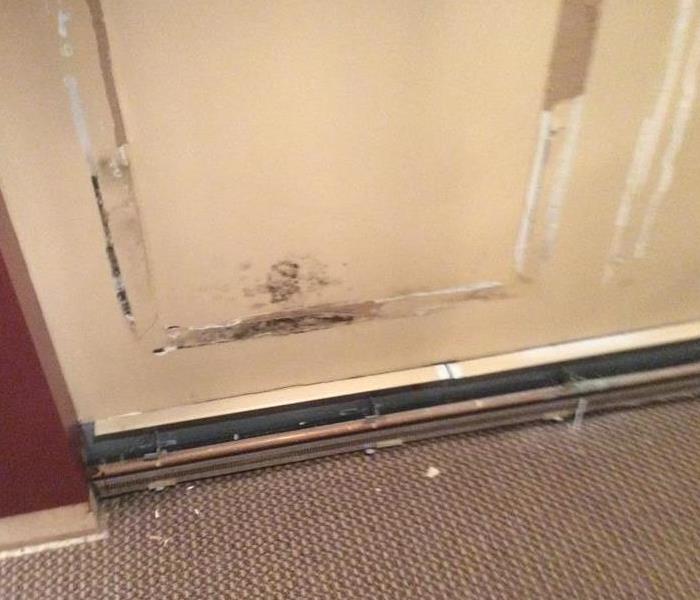 Mold growing behind wainscoting in home theater.
Mold growing behind wainscoting in home theater.
Mold spores are everywhere! It only wrecks havoc on our life when it starts to grow in our home.
Mold requires a few circumstances in order to grow.
1. Warmth: Ideal temperature is 70 degrees Fahrenheit or above. Mold does not flourish in cold temperatures.
2. Food: Organic matter found in sporous materials like carpet, carpet pad, drywall, wallpaper, wood materials, paper products and ceiling tiles.
3. Moisture: Humid environments with poor circulation.
Typically when mold has these conditions present it can begin to grow within 24-48 hours.
To prevent mold from reaching these conditions we must:
First, eliminate water ASAP.
Second, remove any saturated porous materials like carpet padding, insulation and ceiling tiles. Upholstered furniture should be removed as well since it can be a nesting ground for mold and difficult to clean. Lift carpeting to allow flooring underneath to dry out.
Third, dry out any wet materials with fans. Keep area ventilated by opening windows and doors.
Fourth, dry out the moisture in the air with a dehumidifier.
Fifth, sanitize walls, flooring and baseboards. Any baseboards not made of true wood should be discarded. If so made of wood detach from wall to allow drying to occur behind.
In most cases a professional like SERVPRO of Paramus is recommended to perform proper water mitigation and drying. In the event mold does grow on these materials mold remediation will need to be done safely and effectively to ensure no health risks are present.
Bleach Does Not Kill Mold
11/23/2016 (Permalink)
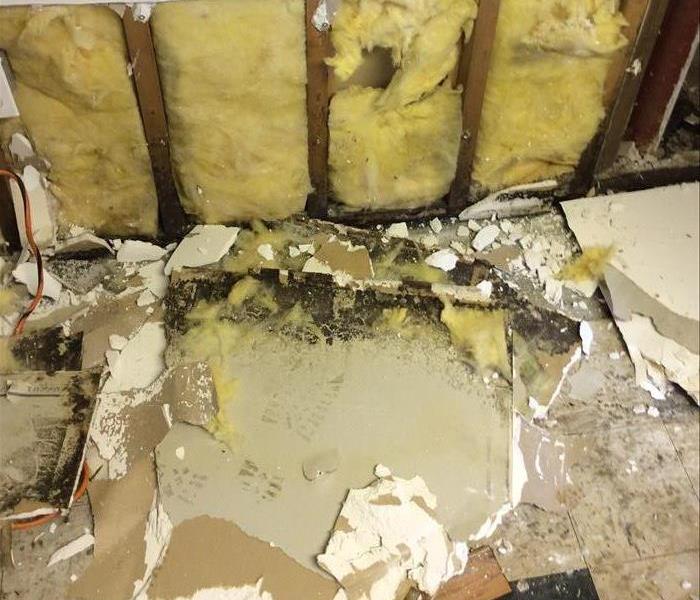 Got Mold? Call Servpro of Paramus/Northeast Bergen County
Got Mold? Call Servpro of Paramus/Northeast Bergen County
BLEACH DOES NOT KILL MOLD
A well-known expert when interviewed on a local New Orleans radio station, recently said, “When you have a mold problem, simply wash down the affected area with diluted bleach.” We have seen FEMA handing out gallons of Clorox to flood-victims. Lowe’s and Home Depot stock up pallets of the stuff whenever the impending doom of a threatening hurricane is close. This is one of the most widely publicized “urban legends”. Bleach is a powerful oxidizer and can, in many instances, sanitize surfaces of certain types of bacteria but when you are faced with a wall or beams etc. covered in mold, Bleach is NOT the product to use. Contact the professionals at SERVPRO of Paramus/Northeast Bergen County.
Eyebrows raise in disbelief every time I say the phrase “bleach doesn’t kill mold.” Some look at me as if I’m speaking another language and they are right. I am speaking the TRUTH. Bleach (active ingredient is Sodium Hypochlorite) is very effective in removing the discoloration but may leave the microflora that will enable the mold to return in exactly the same spot when conditions are right. So, “how do you know this,” I’m asked.
Anecdotally, my wife wonders why she has to clean the same spot of mold on the bathroom tile month after month. Now she knows why. The mold has never been killed – it simply goes clear and then returns. Bleach will not kill the mold but a good biocide, or anti-microbial will.
To underscore the validity of my claim, I suggest the “Journal of Forest Products” who commissioned a study by Oregon State University a couple of years ago. The mold disappears but the microflora remains and under the right conditions the mold will begin to grow.
In our Sanitization Protocol we recommend using GREEN technologies to remove surface mold. When you use the right kind of anti-microbial, the mold will be destroyed and the underlying bio-slime will be annihilated.
SERVPRO of Paramus/Northeast Bergen County provides free estimates for mold remediation. We can recommend an Industrial Hygienist if needed for testing and protocol. We don't recommend using the same company for testing AND remediation as these should be completely independent of each other.
Contact SERVPRO of Paramus/Northeast Bergen County at 201-445-5588 or SERVPRO9475@SERVPROparamus.com
Don't Let This Happen To You
8/12/2016 (Permalink)
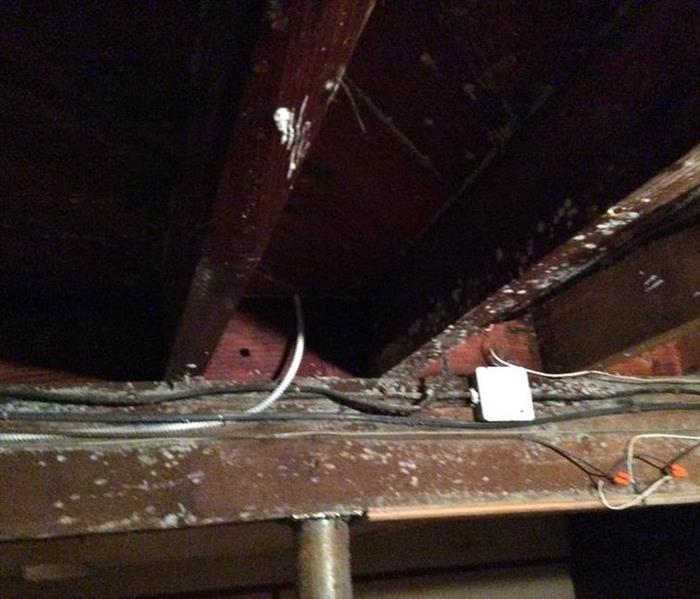 Address water damages professionally as soon as they happen. Contact SERVPRO of Paramus/Northeast Bergen County for help.
Address water damages professionally as soon as they happen. Contact SERVPRO of Paramus/Northeast Bergen County for help.
If you think you might have a mold problem, call SERVPRO of Paramus/Northeast Bergen County. One of our mold remediation specialists will examine the structure for any visible signs of mold. In the event mold is found, you will be asked to sign a work authorization form prior to any mold clean up or related work being performed. SERVPRO of Paramus/Northeast Bergen County can provide a written, detailed estimate for you or your insurance company.
If extensive mold growth is present, additional assistance may be required. Some situations require testing by an Inddor Air Quality/Environmental Professional or an Industrial Hygienist. They will independantly do testing and provide a written remediation protocol. You may wish to consult with your insurance adjuster prior to any work being completed to discuss your policy coverages.
You can call our office (201)445-5588 for a referral to an independant Industrial Hygienist.
Our professionally trained crews are here and ready to assist you with any mold concerns.






 24/7 Emergency Service
24/7 Emergency Service
